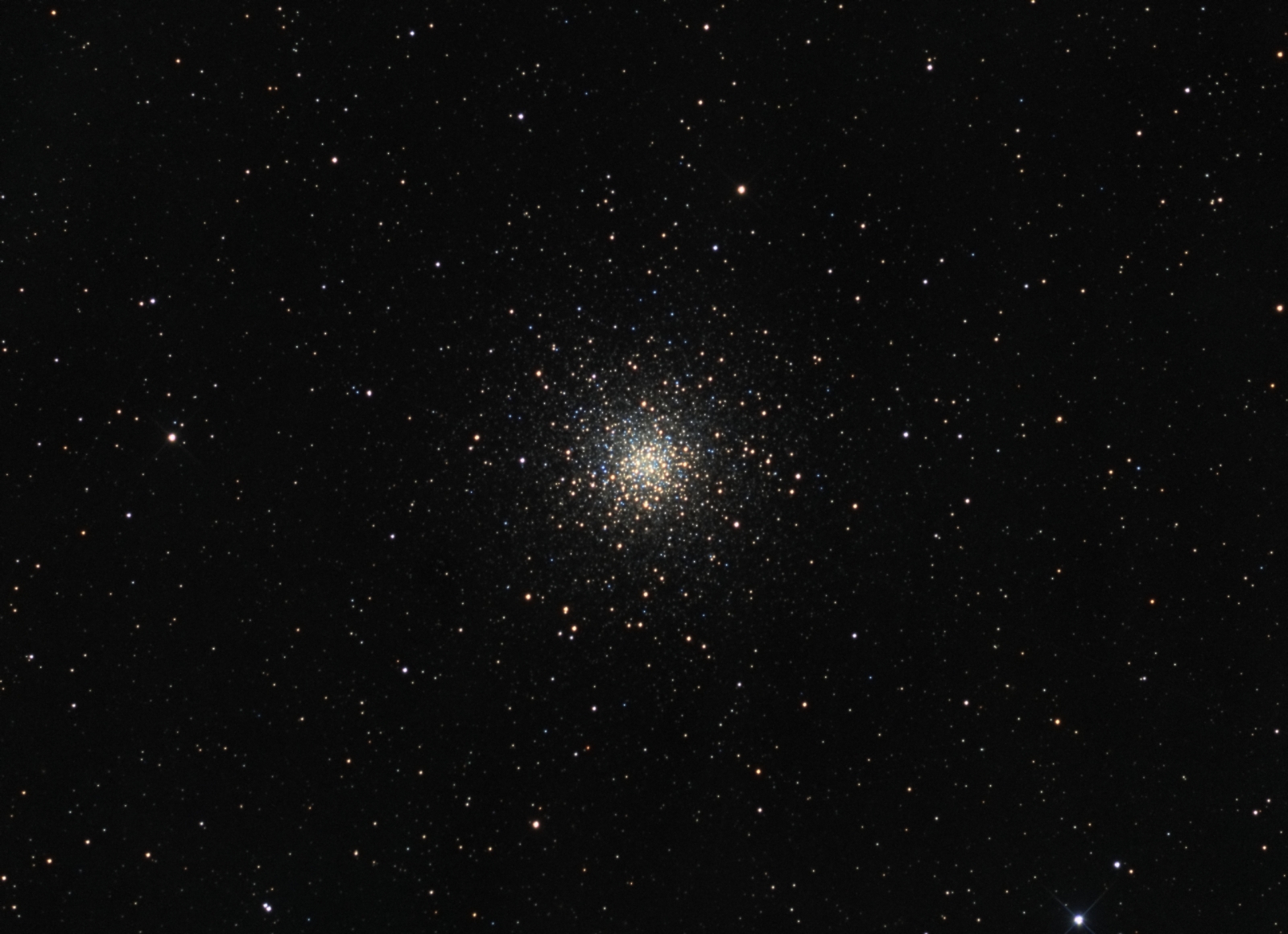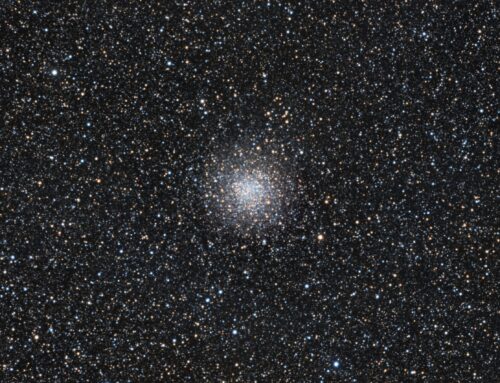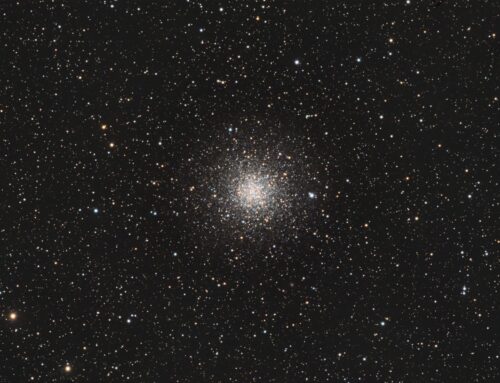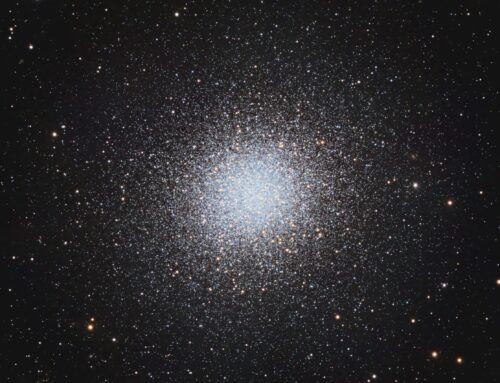M10 Globular Cluster
Click image for full size version
June 11, 2014, Astronomy Magazine Picture of the Day Dec. 10 2014
 M10 is one of at least 14 globular clusters located in the constellation Ophiuchus. Other prominent ones that I have imaged recently are M12 and M14. M19, M62 and M107 are on my list of future targets. Compared to most globular clusters, M10 is relatively loosely packed so is well resolved in images (and through the eyepiece). Notice the obvious difference in star colours. The blue stars are hotter and more massive; redder star are cooler. This cluster doesn’t have an obvious edge to my eye; it just seems to fade into the background. There are lots of faint stars visible in the halo of this object.
M10 is one of at least 14 globular clusters located in the constellation Ophiuchus. Other prominent ones that I have imaged recently are M12 and M14. M19, M62 and M107 are on my list of future targets. Compared to most globular clusters, M10 is relatively loosely packed so is well resolved in images (and through the eyepiece). Notice the obvious difference in star colours. The blue stars are hotter and more massive; redder star are cooler. This cluster doesn’t have an obvious edge to my eye; it just seems to fade into the background. There are lots of faint stars visible in the halo of this object.
This object was imaged in pretty intense moonlight. Have a look at my article on imaging in moonlight. Although the moonlight wasn’t much of a problem, the air was turbulent when I imaged M10, so I may come back to it again…
Tekkies:
SBIG STL-11000M camera, Baader LRGB filters, 10″ f/6.8 ASA astrograph, Paramount MX. Guided with STL-11000′s remote guide head using 80 mm f/6 refractor. Acquisition, guiding, calibration, and integration all done using Maxim-DL. Image registration and all processing in PixInsight. Shot from my SkyShed in Guelph, Ontario. Gibbous moon. Very good transparency and poor seeing throughout.
5x10m R, 5x10m G, 5x10m B, 1x15m L and 13x10m L, all unbinned frames (total=4hr55m).
The R, G, B files produced in Maxim were combined and then registered to the L file. RGB and L were then each background-corrected with DynamicBackgroundExtraction. R, G and B were combined into an RGB image, ColourCalibration was applied and the image was stretched using HistogramTransformation followed by ColorSaturation. The background-corrected L image was processed with deconvolution (using a custom PSF made from DynamicPSF command) and stretched with HistogramTransformation. ACDNR noise reduction was applied with a radius of 0.7 px to remove small scale noise in the background. Luminance was extracted from the RGB image, matched to the L image with LinearFit, and then added back into the RGB image using Channel Combine in the Lab space. LRGB Combine was used to add Luminance to the RGB image. I completed the processing by adjusting contrast and colour saturation using Curves. Image scale is about 1.1 arc sec per pixel.







Leave A Comment